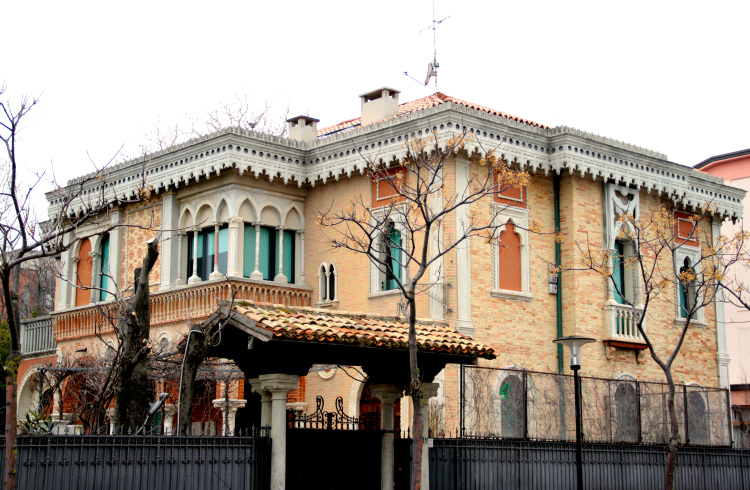Semiramide: an editorial discovery!

In case anyone thought that the lives of score editors were dull, this great story about the discovery of the “stage band score” for Semiramide should put that thought to rest. Many thanks to Patricia Brauner for sharing this memory and for providing the link to the beautiful photograph where it all took place.
Photo:Valeria Sant’Angeli.
Semiramide: an editorial discovery!
Patricia B. Brauner
In August (of 2000? 2001? earlier?) the Gossett crew was working, as usual, in Pesaro, Italy. The summer editorial staff normally consisted of Philip, Bruno Cagli, Mauro Bucarelli (an Italian musicology student of Cagli’s), and me, as Philip’s assistant. The workspace had always been ad hoc for the summer crew; that year we were working at the Villa Ugolini, an early 20th-century Renaissance-style building given to the Comune of Pesaro by the heirs of Giorgio Ugolini, who had acquired it in 1912 (recent photos posted by Valeria Sant’Angeli here: https://vuessefashion.wordpress.com/2017/03/10/1753/). It was across the street from the beach (to which we escaped whenever possible) but had no air-conditioning. August in Pesaro can be excruciatingly hot, as many of you know.
Each of us worked in a different room on an upper floor. Mauro (now Segretario Artistico/Artistic Administrator of the Orchestra of the National Academy of Santa Cecilia) was assigned the unenviable task of itemizing all the original performing parts of Semiramide, which along with Rossini’s autograph score are conserved in Venice in theTeatro La Fenice collection of the Fondazione Levi. (Many thanks to Mauro for refreshing my memory of that particular day.) The parts for each instrument were photographed on microfiche, sheets of microfilm typically about 4 by 6 inches (10 by 15 cm), containing microreproductions of the pages in a grid pattern. A microfiche is viewed on a machine that projects an enlarged image on a screen. Its light source and fan also produce heat, adding to the discomfort of Pesaro in August. All Semiramide’s performing parts are in the hand of a single copyist (somewhat unusual for a major theater at that time). Semiramide has an orchestra consisting of 2 Flutes, 2 Oboes, 2 Clarinets, 2 Bassoons, 4 Horns, 2 Trumpets, 3 Trombones, Timpani, Bass Drum/Triangle/Tam-tam, a full complement of strings, and a stage band, so there are many pages of music. It was growing late in the afternoon, and Mauro, whose vision was strained by staring at the reader all day, came to me and suggested we go home. I asked him please to read just one more fiche. Here is Mauro’s recollection.
While I was looking at the microfiche, despite the fact that my eyes were very tired, I noticed that suddenly the writing was not the copyist, but Rossini himself. I was encouraged by this to go on. I then came to you asking if you could also confirm it: you immediately said yes, but you wanted to go to Philip. We went to his desk, and he screamed that “yes”, that was Rossini’s writing. This was the autograph of the stage band score! Philip immediately said it was a great discovery.
To possess Rossini’s own score for the stage band in Semiramide is wonderful. In a review published in the Gazzetta privilegiata di Venezia of February 22, 1823, less than three weeks after the premiere, the reviewer speaks highly of the effectiveness of the band.
In this Introduction Rossini has put on stage a large military band, which makes a stupendous effect in preparing for the chorus and accompanying it while it sings. Rossini has been much criticised for the use or abuse of introducing onstage bands. […] May I express the wish that anyone hostile to bands should come to hear the effect of this one in Semiramide; they would perhaps change their minds. It contributes no small amount to the magnificence of the show. To give proper praise to the band (which is that famous one of the Imperial Esterhazy infantry regiment) one should say that the performance is as perfect as one could desire.
It was a marvelous moment in the life of Rossini editors.
